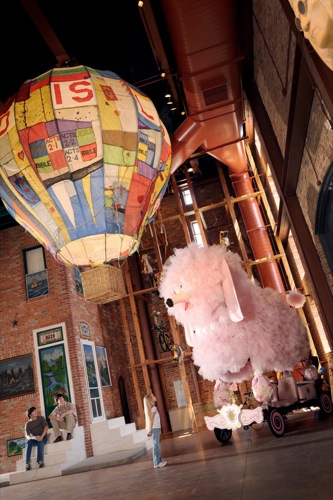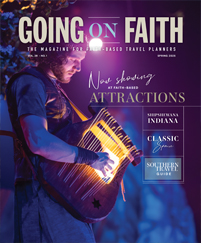
The American Visionary Art Museum exhibits inventive work created by untrained artists.
Photos courtesy Visit Baltimore
Look far into America’s religious history — or any part of its history — and you will find Baltimore.
As the waterfront heart of Maryland, Baltimore enjoys a history that stretches back deep into the Colonial period. During that time, as the roots of a nation were forming, communities of faith were sprouting up around the city, setting the precedent for a long and fruitful spiritual legacy.
Today, church groups that visit Baltimore can explore that religious heritage as part of a tour of the many historic sites tucked inside the city’s neighborhoods. There’s more to discover along the way, too, from renowned aquariums and museums to Camden Yards, one of the most famous stadiums in baseball.
Take a group to Baltimore and you may find some inspiration of your own in its mix of faith, history and modern fun.
A City of Churches
Evidence of Baltimore’s religious history abounds in the city: You’re likely to find it almost everywhere you look.
“Baltimore is a city of neighborhoods, and there are churches in every neighborhood,” said Tom Noonan, CEO of Visit Baltimore and the city’s chief tourism ambassador. “I’m located in Canton, and there are historic churches all over the neighborhood. You look around the skyline of downtown Baltimore, and you see these churches everywhere. They are all over the city.”
Most every one of the area’s historic churches has had a role in Baltimore’s growth and development, and some have had an influence that extends beyond the boundaries of the city. Perhaps the most notable is the Baltimore Basilica, a national shrine and national historic landmark. Constructed from 1806 to 1821, it was a symbol of religious freedom in a time when America was heavily Protestant.
“Maryland was a Catholic colony, and the Baltimore Basilica was basically the first Roman Catholic cathedral in America,” Noonan said. “A lot of popes have visited the church, and a lot of archbishops are buried in the crypt below. It’s an impressive building and a beautiful church.”
The church was designed by John Carroll, America’s first bishop, and planned by famous architect Benjamin Henry Latrobe. From 2004 to late 2006, it closed to undergo an extensive renovation that brought the building back to its original beauty. Today, the church offers daily tours that highlight the art and architecture throughout the building; concerts and lectures also take place from time to time.
Other houses of worship throughout the city hold similar significance. West of the city, B’nai Israel Congregation of Baltimore occupies the first synagogue in Maryland, once known as the Lloyd Street Synagogue. The Moorish Revival building has a series of artifacts and exhibits, along with art depicting the Ark of the Covenant and the Ten Commandments.
Near Inner Harbor, in the heart of Baltimore’s tourism district, Old Otterbein Church is the city’s oldest church edifice in continuous use. Built in 1771, it has hosted renowned preachers such as Francis Asbury. In the early 1800s, it was the cradle of the United Brethren denomination, which eventually became part of the United Methodist Church.
Today, though, Old Otterbein is known to locals for its fundraising activities.
“It’s nicknamed the Peanut Church,” Noonan said. “If you walk over to Camden Yards for a baseball game, the church members are there selling peanuts. Those peanut sales fund the whole church.”










